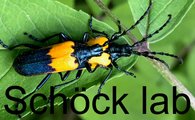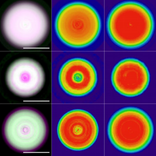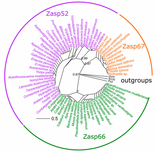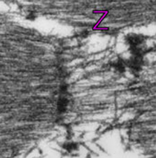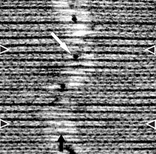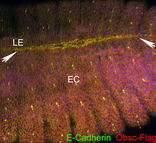Research
Projects
We use many exciting techniques, for example
CRISPR-Cas9 genome editing in flies, gene synthesis, high-resolution fluorescence imaging, and proteomics to answer the following questions:
How do Alp/Enigma family proteins, in particular Zasp52, Zasp66, and Zasp67 contribute to myofibril assembly?
Cells can build highly complex intracellular structures from small protein subunits. We study the cell biological mechanisms by which cells assemble a contractile actomyosin cytoskeleton and connect it to surrounding tissues. Our current research focuses on how myofibrils assemble in the fruit fly Drosophila melanogaster. We use Drosophila as a model system because of its unique genetics, which allows us to study the relationship and function of genes in tissues, and because of the high homology of basic cellular processes between Drosophila and humans. Myofibrils (see Figure) consist of an actin cytoskeleton arranged into a highly repetitive and regular, almost crystalline array of sarcomeres. Even small changes in sarcomere structure are readily visible in the microscope, making this an ideal model to study mutations in cytoskeletal proteins. We also study the function of some prominent muscle proteins in non-muscle cells. Our research leads to a better understanding of muscle disorders and their underlying cell biological defects.
What are the evolutionarily conserved functions of the Zasp PDZ domain?
Figure. An individual myofibril from the indirect flight muscles of Drosophila. The image is the merge of a triple staining with Alexa 594-phalloidin visualizing the actin thin filaments in red, anti-Zasp52 antibody visualizing the Z-discs (Z) in green, and anti-obscurin antibody visualizing the M-line (M) in blue. Actin filaments are anchored at the Z-disc. The myosin thick filaments, not shown in this image, are anchored at the M-line. The myosin heads of thick filaments bind to the thin filaments to produce contraction. The smallest contractile unit of muscles is called sarcomere, and is bordered by Z-discs. An indirect flight muscle sarcomere is 3.3 micrometers long.
Should you wish to know more, please consult our publications or talk to us!
What is the function of filamin at the Z-disc during myofibril assembly and maintenance?
How does obscurin mediate myosin thick filament assembly at the M-liine?
What are obscurin's non-muscle functions?
